Search results for 'the and'
-

-
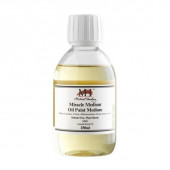
Michael Harding Oil Paint Miracle Medium
Starting at: £12.60
Introducing Michael Harding Solvent-Free Mediums: Miracle Medium™—crafted for artists seeking safer, eco-friendly alternatives to traditional solvents. Derived from renewable vegetable sources, our Miracle Medium offers an odourless formula, eliminating the need for solvents in your studio. With MH Miracle Medium, artists can enjoy a studio environment free from harmful effects associated with solvents. The Miracle Medium™ plant-based range not only ensures environmental sustainability but also creates a safer space for artists and their loved ones Learn More -
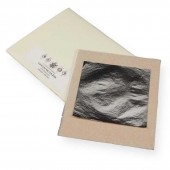
-
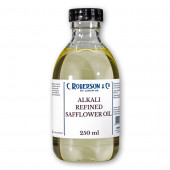
Roberson Safflower Oil
Starting at: £7.70
Safflower Oil is light-coloured, making it suitable for grinding pale pigments. It is still sometimes used as a binder for commercially available paints, although due to its very slow drying time it is best reserved for the final layers of a painting. Compared to Linseed oil, Safflower Oil will give a matte finish.
Learn More -

-

HMG Acrylic Restoration Adhesive
£6.00HMG Acrylic Restoration Adhesive. Heat and waterproof adhesive for repairs to pottery, wood, porcelain, leather etc. Not suitable for use on rubber. 14ml. Learn More -

Gamblin Tack Reducer 150ml
£11.50Small amounts added to ink will efficiently reduce tack. Learn More -
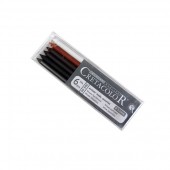
Cretacolour Leads
Starting at: £8.95
Cretacolour Leads. 5mm leads for Cretacolour pencils. The 6 pack contains White chalk, Sanguine Oil, Sepia (Light and Dark), Charcoal Medium, and Graphite 4B Learn More -

Easy Grip Crible Point Squat No 94
£15.76Easy Grip Crible Point Squat #94 Heavy duty tool with tapered shaft ending in a point Crible points are designed to put small holes or indentations in the surface of the plate, creating a dotted or stippled pattern. Learn More -
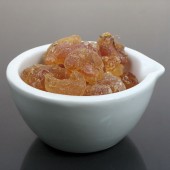
Gum Arabic
Starting at: £6.30
Gum Arabic is a resoluble binding agent, commonly used in the preparation of watercolours, but also useful as an adhesive, a size, and in the production of soft pastels. It is a natural product, harvested from the Acacia tree between October and May. The highest grade of Gum Arabic comes from the Kordofan region of Sudan. It is exceptionally pale and pure and therefore particularly suited to watercolour painting. Please see the Formulas & Recipes section on our homepage for a recipe to make your own watercolour paints using Gum Arabic (currently under construction). Learn More -
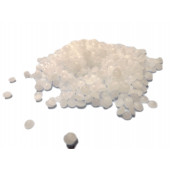
Microcrystalline Wax
Starting at: £8.50
Microcrystalline Wax is related to paraffin wax, and is used as a plasticiser in some recipes. It is characterised by the fineness of its crystals in contrast to the larger crystal of paraffin wax. It is generally more viscous, denser, tackier and more elastic than paraffin waxes, and has a higher melting point. Learn More -
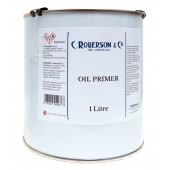
Roberson Oil Primers
Starting at: £23.30
Roberson's Traditional Oil Primer is made in small batches using the highest quality materials. Can be used on canvas or wood. Two to three coats will produce a slippery surface to enable oil colour to be moved around. Canvas should be sized before oil primer is applied using Roberson's Prepared Rabin Skin Glue. Touch dry in approx. 6h. hard dry in 24h. Paint may set in tin, shake tin and stir well before use, dilute with white spirit if desired. Prior to painting , primed canvases should be kept in daylight conditions to prevent over yellowing. Clean brushes in White Spirit. Learn More -

Carnauba Wax Grey
Starting at: £8.40
Carnauba Wax is the hardest wax commonly used in the production of artists' materials, with a melting point of 83-86°c. It is derived from a tree native to South America, and is available in a natural colour (grey), or a refined colour (pale yellow). Small amounts of carnauba wax are commonly used in both oil painting mediums and encaustic painting, usually in conjunction with beeswax to add toughness, durability and sheen to the paint film. It creates an inflexible surface, so works best on rigid supports such as gesso panels, and it should be noted that it will raise the melting point of encaustic mixtures. It can produce a glossy finish; as such it is used in waxes and polishes for shoes, cars, musical instruments, furniture, and wooden floors, especially when mixed with beeswax and turpentine. Learn More -
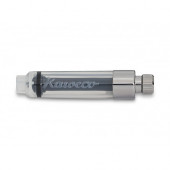
Kaweco Sport Mini Convertor Cartridge
Starting at: £6.40
The Kaweco Mini Converter is the correct converter to use in all Kaweco Sport fountain pens. Learn More -

Winsor & Newton Drying Linseed Oil
Starting at: £9.20
From the Winsor & Newton website: Darker than refined Linseed Oil, this oil promotes the fastest drying rate of all the oils, whilst increasing gloss. Improves flow. Increases gloss transparency. Add to other oils to speed drying.
Learn More -

-
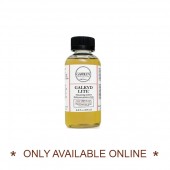
Gamblin Galkyd Lite Medium
Starting at: £12.60
Galkyd Light is produced by Gamblin. They write:
"Galkyd Lite thins oil colours and increases transparency and gloss. When used in moderation with oil colours, Galkyd Lite will retain brushstrokes. Galkyd Lite is more fluid and less glossy compared to Galkyd. Thin layers will be touch-dry in 24 to 30 hours."
Learn More -
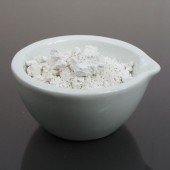
Whiting
Starting at: £4.00
Whiting is powdered Calcium Carbonate, which can be mixed with rabbit skin glue to create a chalk-based ground for oil, tempera, distemper or encaustic painting. Traditionally, whiting was an important ingredient when preparing painting surfaces in the north of Europe, as opposed to gypsum (Calcium Sulphate), which was widely used south of the Alps. Learn More -
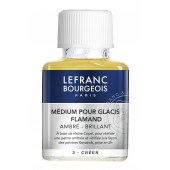
Lefranc Flemish Glazing Medium
Starting at: £9.10
Lefranc Bourgeois are a paint manufacturer with a long history of supplying to artists since their beginnings in 1720.
From their website: The Flemish glazing medium enables artists to create glossy amber finishes in the style of the Flemish masters. It creates a transparent look. It also greatly enhances the brilliance of the oil. After half a day’s work, the colours can be layered over each other.
Learn More -
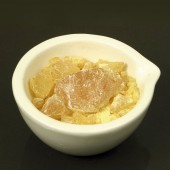
Colophony
Starting at: £7.30
Colophony is a by-product of the distillation of turpentine. It is soluble in most solvents, but considered an adulterant in varnishes and paints, as it forms a weak surface that is prone to darkening and cracking. It is, however, a key ingredient in wax-based etching grounds, imparting hardness, and can be used in powdered form (rosin) to make aquatints. Learn More -
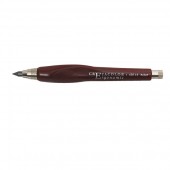
Cretacolour Ergonomic Lead Holder
£19.50Cretacolour Ergonomic Lead Holder. Supplied with 5mm 2B lead. Includes a sharpener in the end cap. Learn More -
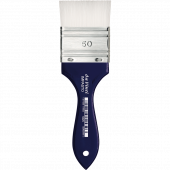
da Vinci Series 5025 Impasto Mottler
Starting at: £10.50
Extra strong white synthetic bristles, short lenght short blue polished handle, rust proof steel ferrule. Learn More -
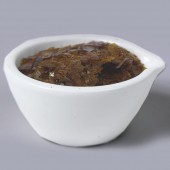
Lemon Shellac
Starting at: £8.20
Shellac is a natural resin that is deposited by the female lac insect on the branches of trees in India and Thailand. It is soluble with alcohol, but not with mineral spirits or turpentine. It forms a tough yet flexible film, with many applications. It is suitable as a top coat for gilding when applied thinly, a sealant for porous surfaces, an isolating layer for tempera paintings, a base for pigmented inks, a protective layer for collograph plates, and a warm varnish for wooden floors and furniture. As it is prone to darkening with age, it is not recommended as a varnish for oils, and its solubility can reduce over time. There are various grades of shellac. When mixed with alcohol, it may initially form a cloudy mixture, due to traces of wax in the shellac, but this should become clear once it has dried. The highest grades of shellac are Clear Dewaxed Shellac, which has been de-coloured using the carbon filtering method, Lemon Shellac, and Orange Shellac, which are pale in colour. Button Shellac is less refined and therefore produces a reddish varnish. It was, in fact, widely used as a red dye before synthetic dyes became available. Learn More -
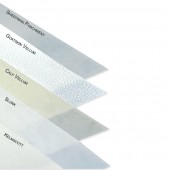
Slunk
Starting at: £16.75
Skin of young calves. Very fine and translucent. Requires little or no preparation before writing.
Please note: This is a natural product that has been finished and cut by hand. As such, there may be slight variations in the surface and size of each piece.
Learn More -
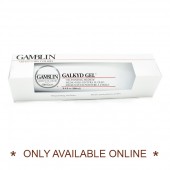
Gamblin Galkyd Gel "G Gel" 150ml
£19.40Galkyd "G" Gel is produced by Gamblin. They say:
"Galkyd Gel is a stiffer gel compared to Neo Megilp that holds thicker, sharper brushmarks and dries more quickly. Galkyd Gel increases transparency of oil colours and creates impasto."
Learn More -
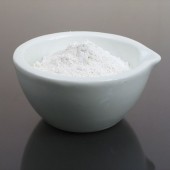
Plaster of Paris
Starting at: £5.50
For moulding when mixed with the same volume of water. Sets quickly and will not shrink. Learn More -

Roberson Liquid Leaf Metallic Paint
Starting at: £12.50
A one-step paint, giving a permanent finish, closely resembling traditional gilding with leaf. Learn More -
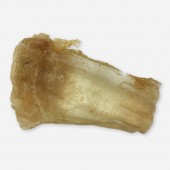
Isinglass
Starting at: £30.10
Isinglass is derived from the dried swim bladders of fish, with Salianski Isinglass being the highest grade available. In the Russian Icon tradition, it commonly provided the glue component in gesso recipes, and was sometimes mixed with pigment to make tempera paints, due to its high binding strength. It can be used to make a pale, clear glue, which is less prone to darkening than other animal glues, and which is particularly flexible, making it a useful material for repairing textiles. Learn More -

Pro Arte Series 103 Rigger
Starting at: £3.70
Long haired synthetic brush with good colour holding capacity and spring. Very fine point. Learn More -
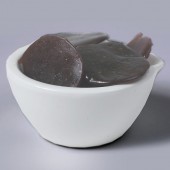
Button Shellac
Starting at: £8.40
Shellac is a natural resin that is deposited by the female lac insect on the branches of trees in India and Thailand. It is soluble with alcohol, but not with mineral spirits or turpentine. It forms a tough yet flexible film, with many applications. It is suitable as a top coat for gilding when applied thinly, a sealant for porous surfaces, an isolating layer for tempera paintings, a base for pigmented inks, a protective layer for collograph plates, and a warm varnish for wooden floors and furniture. As it is prone to darkening with age, it is not recommended as a varnish for oils, and its solubility can reduce over time. There are various grades of shellac. When mixed with alcohol, it may initially form a cloudy mixture, due to traces of wax in the shellac, but this should become clear once it has dried. The highest grades of shellac are Clear Dewaxed Shellac, which has been de-coloured using the carbon filtering method, Lemon Shellac, and Orange Shellac, which are pale in colour. Button Shellac is less refined and therefore produces a reddish varnish. It was, in fact, widely used as a red dye before synthetic dyes became available. Learn More





